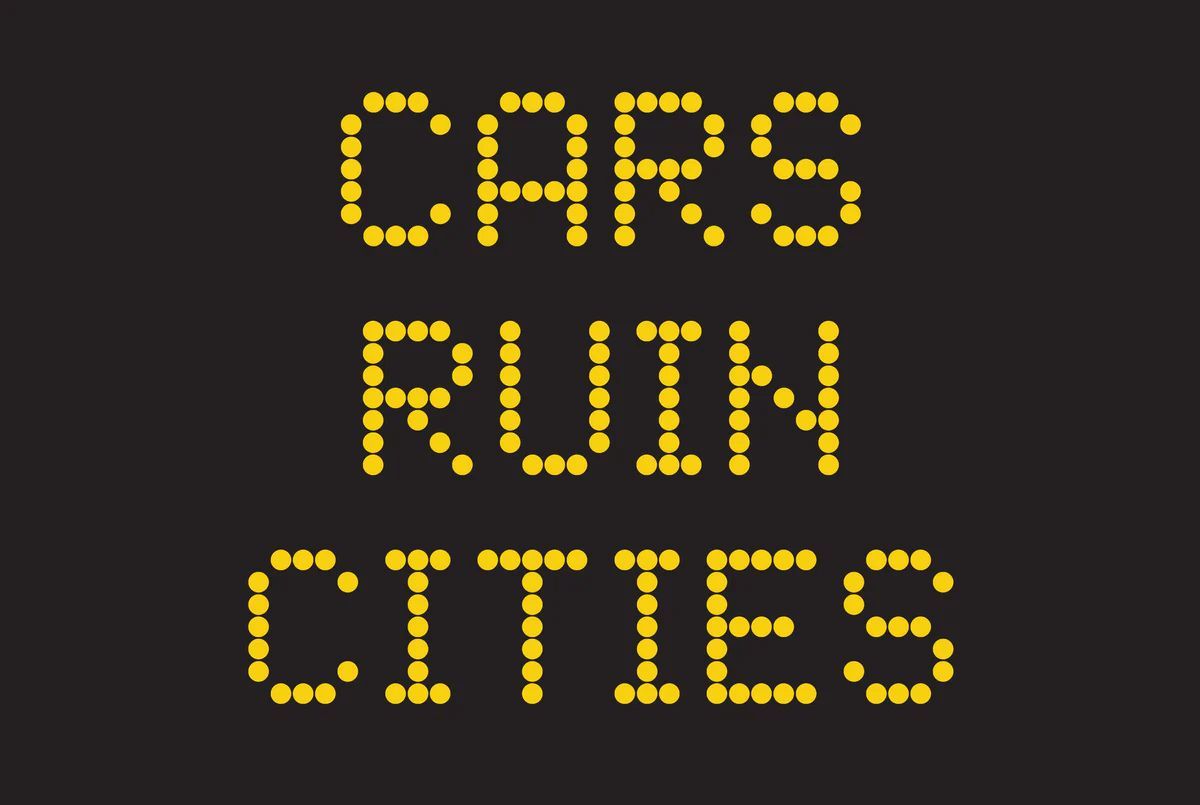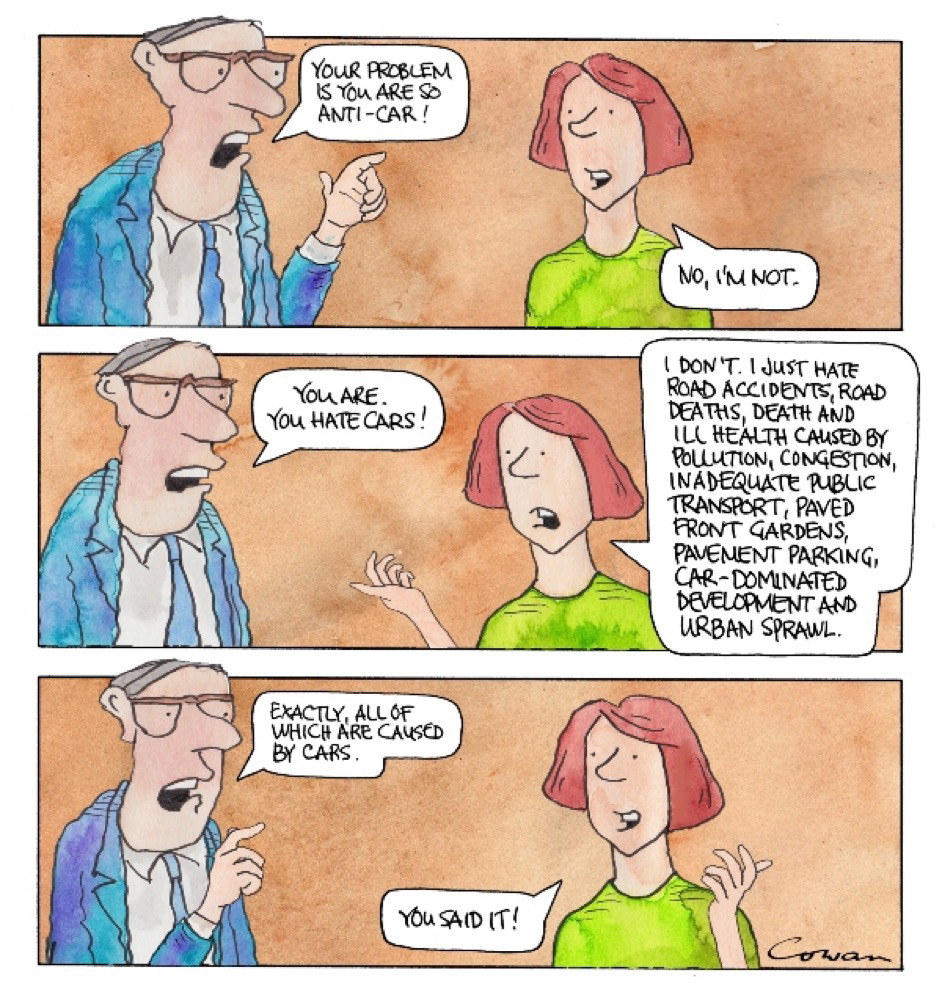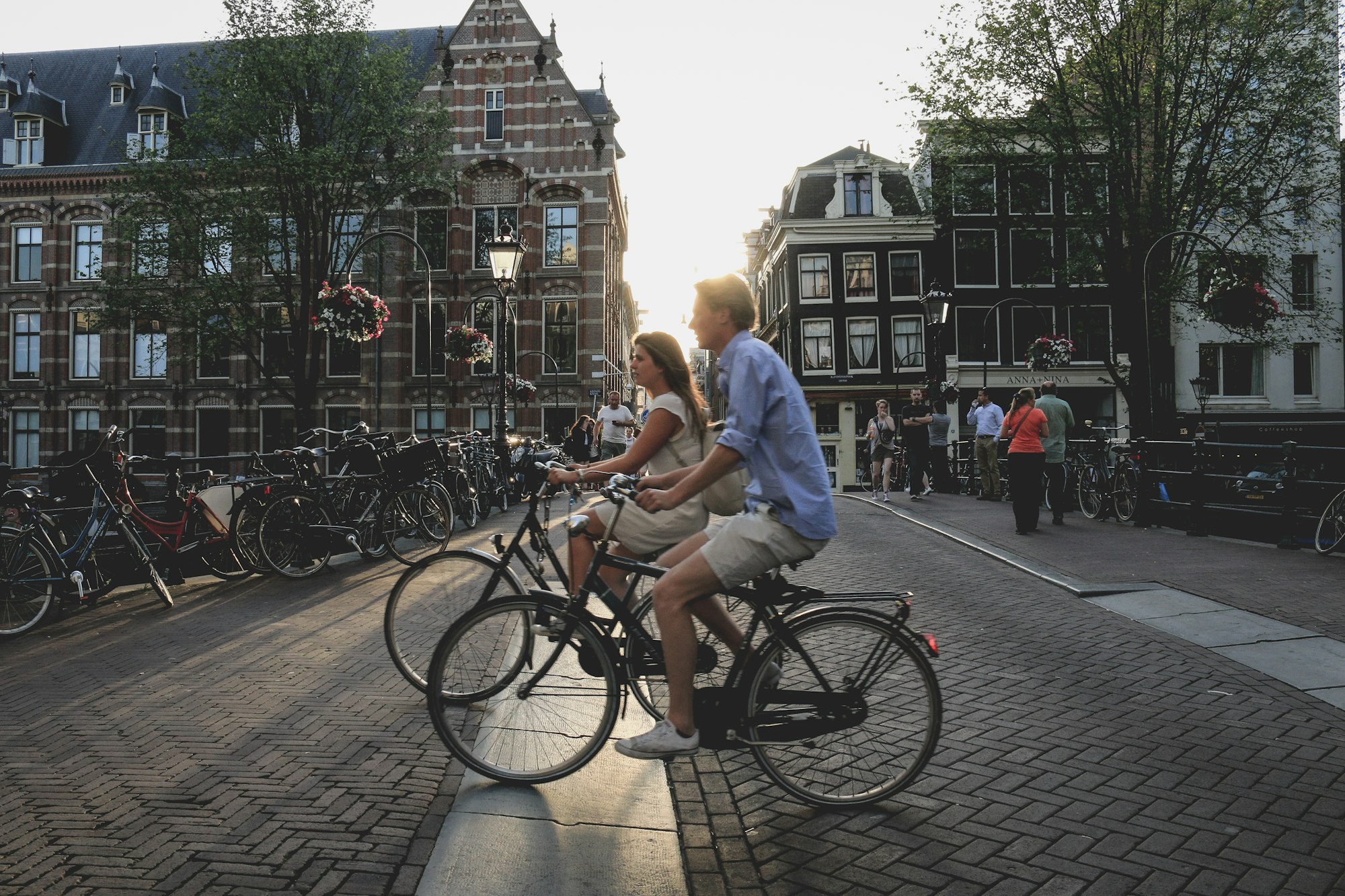Cars ruin cities

It's a bold assertion that can stir passionate responses, triggering a cascade of emotions. What appears as a mere provocation is, in reality, a complex discourse shedding light on the myriad effects that have quietly permeated our urban landscapes.
Our cities, once vibrant hubs of culture and community, now bear the marks of an automobile-centric existence. The honking horns, the perpetual gridlock, and the relentless search for parking spaces have become so ingrained in our daily lives that we scarcely question their impact. Yet, by allowing automobiles to dominate our urban spaces, we inadvertently compromise the very essence of city living.
This isn't a call for an all-out abandonment of cars. Rather, it's an invitation to reconsider our urban landscape and reimagine our modes of transportation. The crux lies in cultivating an intelligent modal mix that thoughtfully orchestrates various means of transport, with a paramount focus on enhancing the overall quality of life for the entire community. It's about transcending the binary of all-or-nothing and embracing a future where our cities seamlessly integrate diverse modes of transportation, fostering sustainability, efficiency, and, above all, a heightened urban experience.

Congestion
One of the most evident ways in which cars can ruin cities is through traffic congestion. As urban populations swell, the number of vehicles on the road also increases, leading to perpetual traffic jams. Congestion not only wastes time and money but also contributes to stress and reduced air quality. The constant stop-and-go traffic creates inefficiencies in transportation systems, hindering economic productivity.
Pollution
The ominous cloud of automobile pollution shrouds our cities, inflicting a toll on the well-being and life expectancy of urban dwellers. Cars combust fossil fuels, releasing a noxious cocktail of pollutants into the air we breathe. This has undeniable consequences for human health, with respiratory ailments on the rise. Urgent measures are needed to curb this silent assailant on our well-being, fostering cities that prioritize clean, sustainable modes of transportation for the sake of healthier, happier communities.
Noise Pollution
In the relentless symphony of urban life, the dominance of automobiles contributes to a pervasive yet often overlooked form of pollution—noise pollution. The incessant honking, revving engines, and perpetual hum of traffic disrupt the tranquility that cities once offered. Noise pollution from automobiles has been linked to increased stress levels, sleep disturbances, and adverse effects on mental health. Lower tempo limits and alternative transportation solutions are needed to restore harmony and serenity to our urban environments.
Safety Concerns
The unchecked dominance of automobiles in urban landscapes raises pressing safety concerns that cast a dark shadow over society. The bustling streets, once vibrant hubs of community life, have transformed into perilous zones where pedestrians and cyclists navigate a precarious coexistence with fast-moving vehicles. The rise in traffic accidents, injuries, and fatalities is an alarming testament to the imbalances caused by this vehicular hegemony. Moreover, the emphasis on accommodating cars has often led to the neglect of pedestrian-friendly infrastructure and safe cycling lanes, further marginalizing non-motorized modes of transport. This not only jeopardizes the well-being of individuals but fractures the social fabric of our cities, as public spaces become battlegrounds for survival rather than communal gathering spots. It's imperative to recalibrate our urban priorities, placing safety at the forefront, and envisioning cities that prioritize the well-being of all residents over the unchecked convenience of automobiles.
Urban Sprawl
The relentless dominance of automobiles in our cities serves as a catalyst for the pervasive phenomenon of urban sprawl—a spatial expansion characterized by the unchecked proliferation of low-density developments. As cities bow to the demands of accommodating car-centric lifestyles, vast expanses of land succumb to suburbanization, fragmenting communities and depleting valuable resources. The negative impact on society is palpable, with increased commute times, heightened dependence on private transportation, and a palpable sense of isolation. Urban sprawl not only exacerbates environmental concerns but also contributes to social and economic disparities, fostering a disjointed urban fabric. It's a sobering reminder that our infatuation with automobiles not only shapes the physical landscape but also leaves a lasting imprint on the social cohesion and well-being of our communities.
Sealed Surfaces
The dominance of automobiles has paved the way for a hidden environmental conundrum—sealed surfaces, the unyielding bedrock of urban landscapes. As we prioritize road networks and parking spaces to accommodate the ceaseless flow of vehicular traffic, we unwittingly contribute to the exacerbation of global warming through the notorious urban heat island effect. The very streets we traverse become heat traps, absorbing and radiating warmth long after the sun has set. A paradigm shift in urban planning is imperative, reimagining our cities with permeable surfaces and green spaces to foster a cooler, more resilient urban future.
Economic Cost
The economic ramifications of car-centric urban planning are a weighty toll on both cities and their inhabitants. The heavy reliance on automobiles leads to colossal infrastructure costs, with vast expenditures on expansive road networks, parking facilities, and maintenance. This diverts funds that could otherwise be invested in public services, education, and social programs. Moreover, the hidden costs, such as healthcare expenses due to air pollution and traffic-related accidents, further strain economic resources. The car-centric model also perpetuates a cycle of dependency, as individuals face ongoing expenditures for personal vehicles and fuel. In contrast, fostering pedestrian-friendly and public transit-oriented urban planning not only reduces these financial burdens but also stimulates local economies by promoting vibrant, walkable neighborhoods and encouraging small businesses to flourish. The economic cost of persisting with car-centric approaches is not merely a fiscal burden; it's a missed opportunity for cities to invest in a more sustainable, equitable, and economically resilient future.
Conclusion
In the tumult of our car-dominated cities, the clash between individual freedom and the vitality of public spaces is starkly evident. While automobiles offer the allure of personal mobility, the price paid in terms of urban degradation and compromised public life is substantial. The challenge lies in striking a balance between individual convenience and the collective well-being of our cities.
It's time to redefine our notion of freedom in urban spaces, shifting from the isolation of private vehicles to the embrace of communal, pedestrian-friendly environments.
By relinquishing the illusion of unbridled autonomy behind the wheel and championing alternatives that prioritize public health, accessibility, and a thriving urban fabric, we pave the way for a future where cities not only function but flourish, offering a harmonious blend of personal freedom and shared, vibrant public spaces. The road ahead may require detours from conventional thinking, but it leads to a destination where the true essence of city living is restored.

